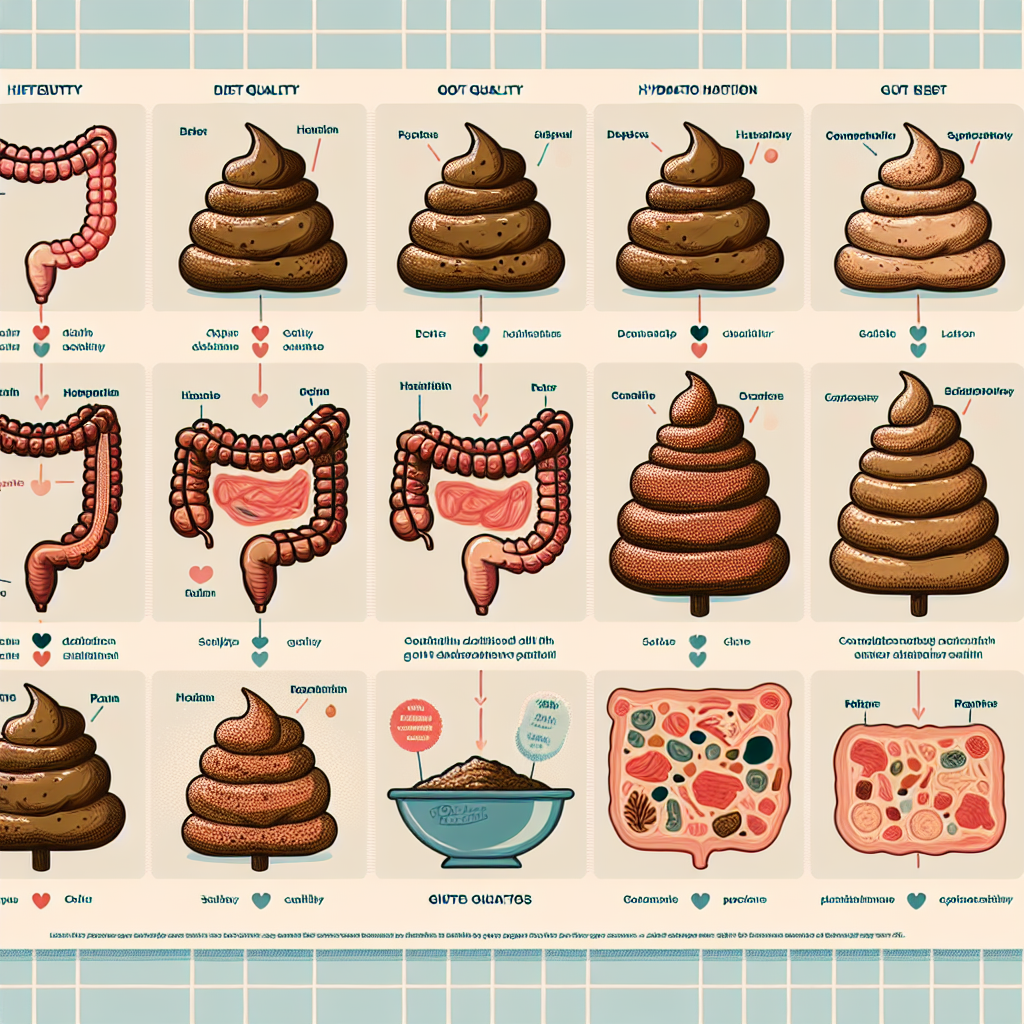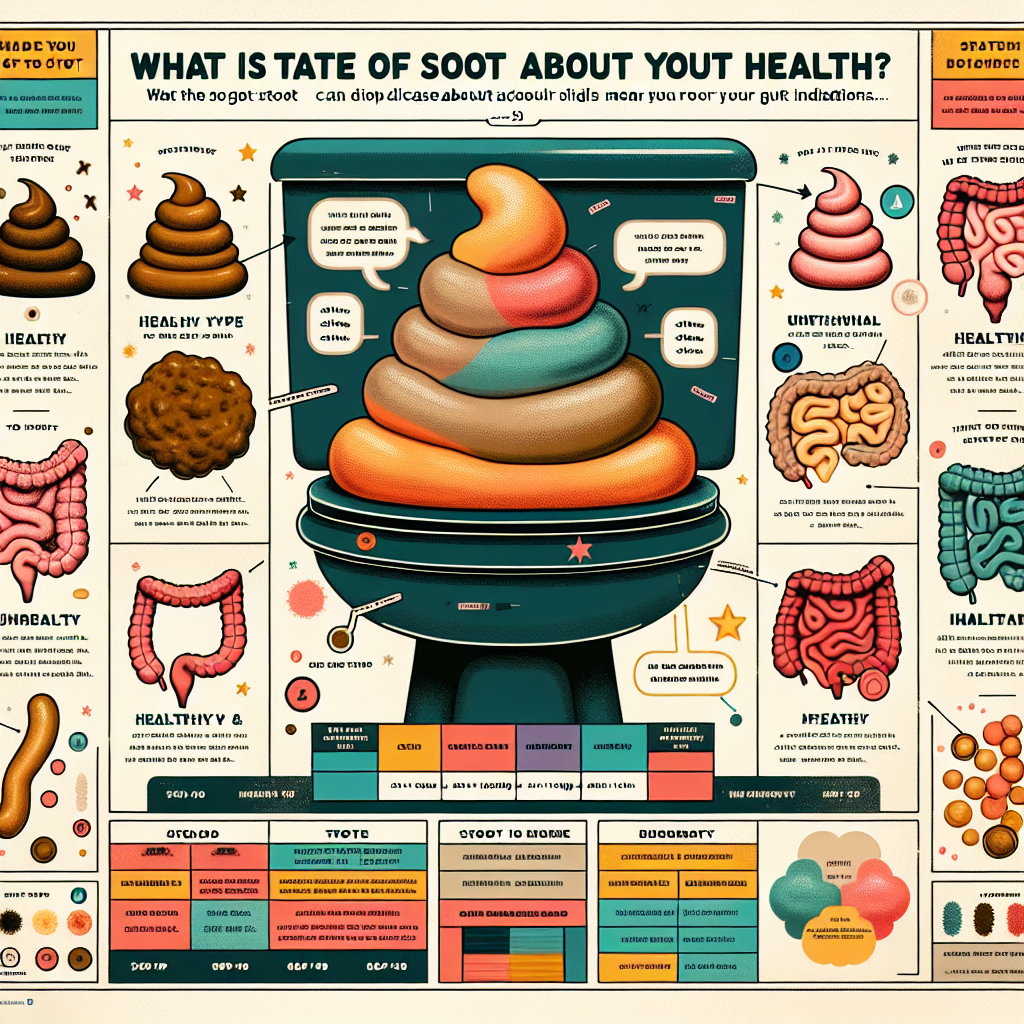Decoding Your Stool: What It Reveals About Your Gut Health

Discover what your stool reveals about your gut health! Decode the signs and symptoms and take control of your digestive health today. Visit My Vibrant Vitality now to learn more.
Understanding Your Stool: Indicators of Gut Health
Decoding your stool may not be the most pleasant topic to discuss, but it is an essential aspect of understanding your overall health, particularly your gut health. The characteristics of your stool, such as its color, consistency, and frequency, can provide valuable insights into the state of your digestive system.
To begin with, the color of your stool can be a significant indicator of your gut health. A healthy stool typically ranges from light to dark brown, a result of the bile produced in your liver. However, deviations from this color spectrum can signal potential health issues. For instance, green stool may indicate that food is passing through your large intestine too quickly, while yellow, greasy, and foul-smelling stool could suggest malabsorption issues, such as celiac disease. Red or black stool may be a sign of gastrointestinal bleeding and should prompt immediate medical attention.
The consistency of your stool is another crucial factor to consider. The Bristol Stool Chart, a medical tool designed to classify the form of human feces into seven categories, can be a helpful guide in this regard. Types 1 and 2 on the chart, which represent hard and lumpy stools, may suggest constipation, often a result of inadequate fiber intake or hydration. On the other hand, Types 6 and 7, which represent mushy or watery stools, may indicate diarrhea and could be a sign of an infection or a symptom of conditions like irritable bowel syndrome or inflammatory bowel disease.
The frequency of your bowel movements also plays a significant role in assessing your gut health. While there is no ‘normal’ frequency, as it varies from person to person, most people have bowel movements between three times a day to three times a week. A sudden change in your bowel movement frequency, especially when accompanied by other symptoms like abdominal pain or changes in stool consistency or color, could be a sign of a digestive disorder.
Moreover, the presence of mucus in your stool can also be an indicator of gut health. While small amounts of mucus are normal, larger quantities could suggest an underlying health issue, such as Crohn’s disease or cystic fibrosis. Similarly, the presence of undigested food particles in your stool isn’t usually a cause for concern, as it often happens when you eat food that’s high in fiber. However, if it occurs frequently, it could indicate a malabsorption disorder.
In conclusion, your stool can reveal a lot about your gut health. Regularly monitoring its color, consistency, and frequency can help you identify any potential digestive issues early on. However, it’s important to remember that while these indicators can provide valuable insights, they are not definitive. If you notice any persistent changes in your stool or experience other symptoms like persistent abdominal pain, unexplained weight loss, or fatigue, it’s crucial to seek medical advice. Your healthcare provider can conduct further tests to diagnose any potential health issues accurately and provide appropriate treatment. Remember, understanding your stool is a key step towards maintaining optimal gut health.
Decoding Stool Colors and Textures: What They Say About Your Digestive Health

Decoding your stool may not be the most pleasant topic to discuss, but it is an essential aspect of understanding your overall health, particularly your gut health. The color, texture, and frequency of your bowel movements can provide valuable insights into your digestive health.
Starting with the color, a healthy stool typically ranges from light to dark brown. This color is a result of the bile produced in your liver that aids in the digestion of fats. However, variations in stool color can indicate different health conditions. For instance, green stools may suggest that food is passing through your large intestine too quickly, not giving the bile enough time to break it down completely. On the other hand, yellow stools could indicate a problem with the gallbladder or liver, as these organs are responsible for producing bile.
Red or black stools should not be ignored, as they could signify bleeding in the gastrointestinal tract. While red stools could be a result of bleeding in the lower digestive tract, black stools often indicate bleeding in the upper digestive tract. However, certain foods and medications can also cause these color changes, so it’s essential to consider your recent dietary intake.
Moving on to texture, a healthy stool should be soft and easy to pass. The Bristol Stool Chart, a medical aid designed to classify the form of human feces into seven categories, can be a helpful tool in understanding what your stool texture reveals about your health. Types 1 and 2 on the chart, which represent hard and lumpy stools, could suggest constipation, often a result of inadequate fiber intake or dehydration. Types 5 to 7, representing soft or watery stools, could indicate diarrhea and may be a sign of an infection or a symptom of conditions like irritable bowel syndrome or Crohn’s disease.
The frequency of your bowel movements also plays a significant role in assessing your gut health. While there’s no ‘normal’ frequency, most people have bowel movements between three times a day to three times a week. However, if you notice a sudden change in your bowel movement frequency, it could be a sign of a digestive issue.
It’s important to remember that while these observations can provide insights into your health, they are not definitive diagnoses. Many factors, including diet, hydration, and medication, can influence your stool’s color, texture, and frequency. Therefore, any persistent changes or concerns should be discussed with a healthcare professional.
In conclusion, your stool can serve as a window into your gut health, revealing potential digestive issues that may need to be addressed. By paying attention to the color, texture, and frequency of your bowel movements, you can gain a better understanding of your digestive health and take proactive steps towards maintaining a healthy gut. However, always consult with a healthcare professional if you notice any significant or persistent changes. After all, your health is not something to be taken lightly, and understanding your body’s signals is a crucial part of maintaining overall well-being.
The Link Between Your Stool and Gut Health: What You Need to Know
Decoding your stool may not be the most pleasant topic to discuss, but it is an essential aspect of understanding your overall health, particularly your gut health. The characteristics of your stool, such as its color, consistency, and frequency, can provide valuable insights into the state of your digestive system.
The human gut, also known as the gastrointestinal tract, is a complex system that plays a crucial role in the body’s overall health. It is responsible for breaking down food, absorbing nutrients, and eliminating waste. The gut is also home to trillions of bacteria, collectively known as the gut microbiota, which play a vital role in maintaining gut health and influencing various bodily functions.
The stool is a direct product of the gut and its processes. Therefore, any changes in your stool can be indicative of changes in your gut health. For instance, the color of your stool can be influenced by what you eat, but it can also indicate certain health conditions. A healthy stool is typically brown due to the presence of bile, a substance produced by the liver to aid in digestion. However, stools that are consistently of a different color, such as red, black, or pale, may indicate issues such as gastrointestinal bleeding, liver disease, or malabsorption.
The consistency of your stool is another important factor to consider. The Bristol Stool Chart, a medical tool used to classify stool into seven types based on its form, can be a helpful guide. Types 1 and 2 on the chart indicate constipation, while types 6 and 7 suggest diarrhea. Both constipation and diarrhea can be signs of gut imbalance, such as a disruption in the gut microbiota or the presence of a gastrointestinal disease.
The frequency of bowel movements also matters. While it varies among individuals, a general rule of thumb is that three times a week to three times a day is considered normal. Infrequent bowel movements may suggest constipation, while frequent bowel movements may indicate conditions such as irritable bowel syndrome or inflammatory bowel disease.
Moreover, the presence of undigested food in your stool can suggest that your body isn’t absorbing nutrients properly. This could be due to a variety of reasons, including a lack of necessary digestive enzymes, inflammation in the gut, or a disorder such as celiac disease.
In conclusion, your stool can serve as a window into your gut health. While it’s normal for your stool to vary based on factors such as diet and stress, significant or persistent changes can be a sign of an underlying issue that needs medical attention. Therefore, it’s important to be aware of what’s normal for you and to seek medical advice if you notice any unusual changes. Remember, maintaining a healthy gut is not just about digestion; it’s about supporting your overall health and well-being.